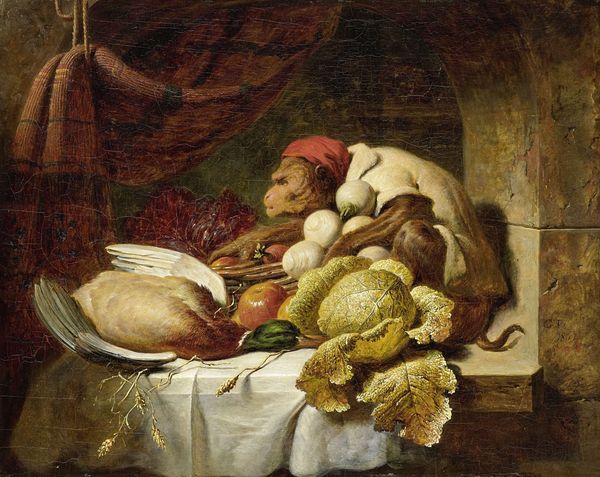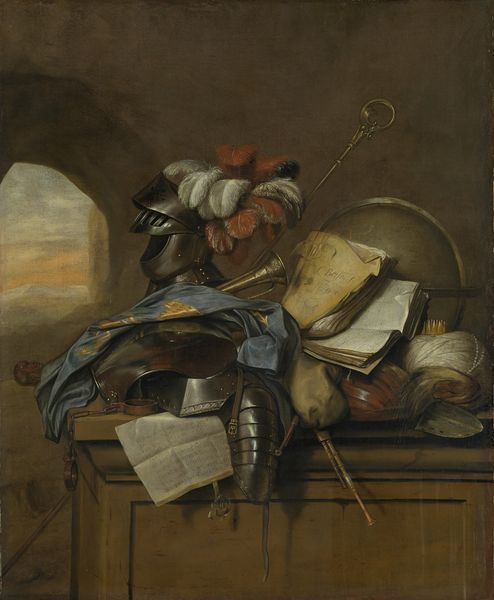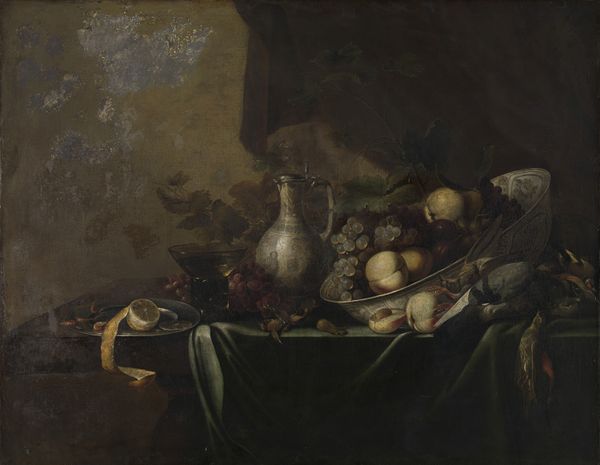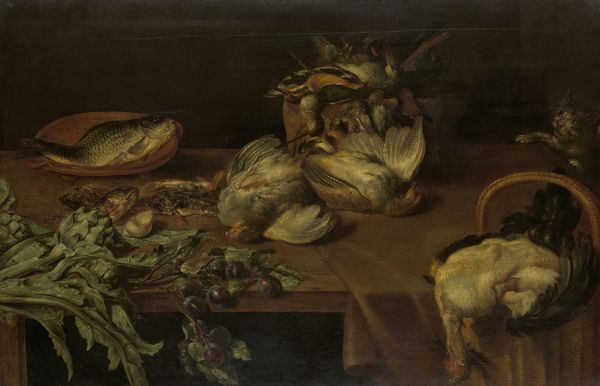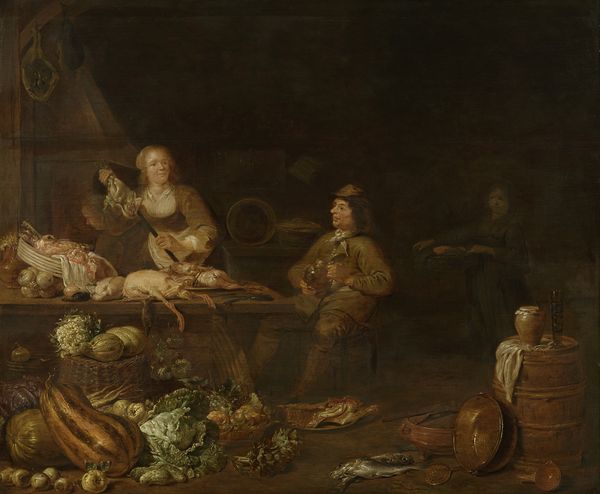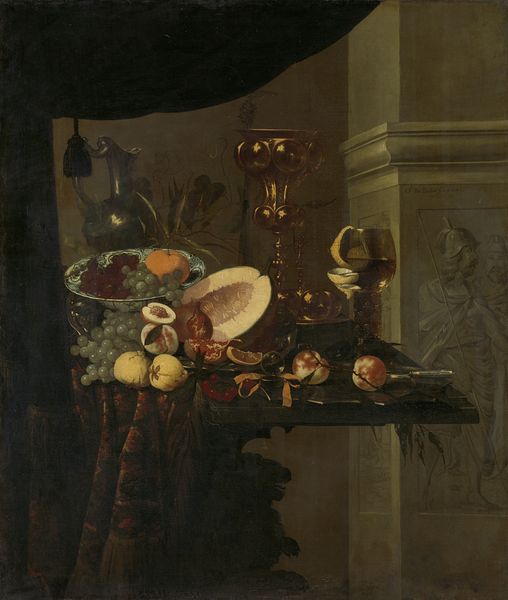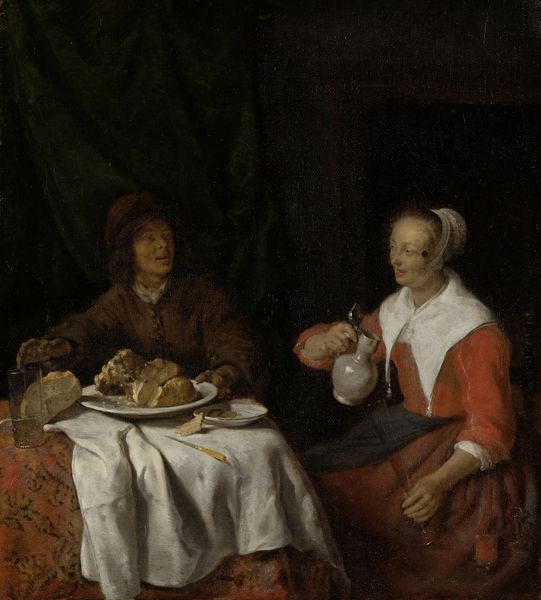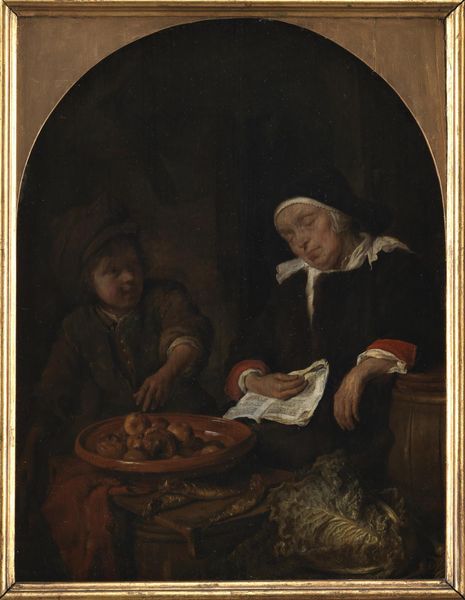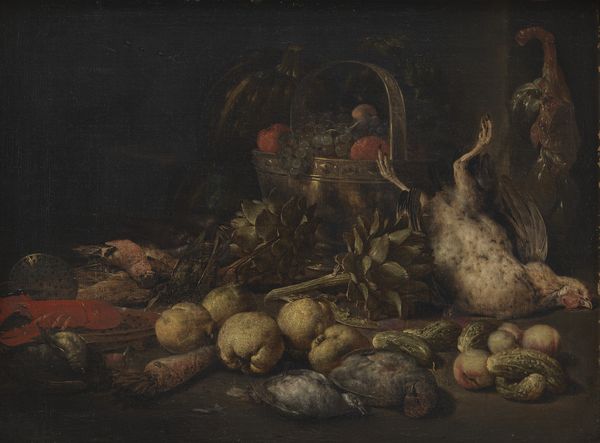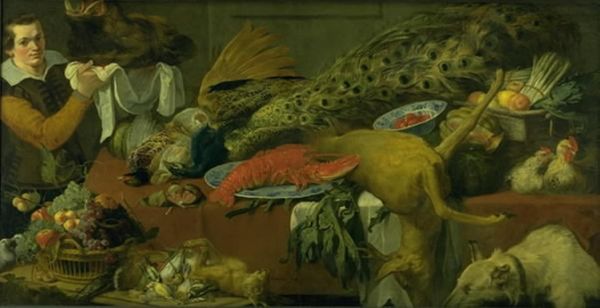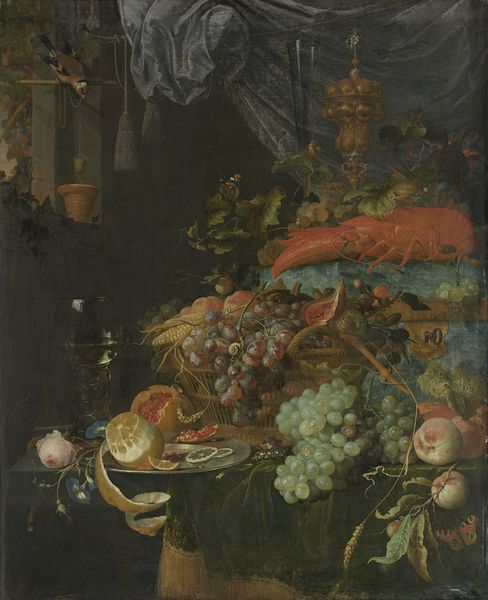
Dimensions: support: 448 x 508 mm frame: 565 x 622 x 72 mm
Copyright: CC-BY-NC-ND 4.0 DEED, Photo: Tate
Editor: Here we have George Lance's "The Red Cap", from the Tate collection. The subdued palette gives the scene a darkly humorous, almost theatrical feel. What strikes you most about this piece? Curator: It's a quirky conversation piece, isn't it? Lance was quite the storyteller. The monkey in its fetching cap is the star, naturally, but consider that still life tradition in the 19th century was all about abundance and moral lessons. Where does this fit? Editor: So, the monkey's almost a parody of those traditions? Curator: Precisely! It's as if Lance is winking at us, asking, "Are we elevated, or just primates with better hats?" It's both amusing and thought-provoking. Editor: I'll never look at a still life the same way again. Curator: Nor should you. Art is a trickster.
Comments
Join the conversation
Join millions of artists and users on Artera today and experience the ultimate creative platform.
tate 6 months ago
⋮
During his lifetime, Lance was regarded as a worthy British successor to the great seventeenth and eighteenth century Dutch and Flemish still life painters. The strongly lit subject matter framed by an arched opening is directly inspired by the work of these masters. The action of the monkey - whose hat gives the picture its title - is inspired by human prototypes: he is undecided whether to eat first and play afterwards or vice versa. 'Monkeyana' pictures, in which the behaviour of monkeys is linked to human foibles, had a vogue in the early 1800s. Lance has given the monkey the red cap of liberty. The reference would have taken on particular significance in 1848, the 'year of revolutions' in Europe. Gallery label, August 2004
